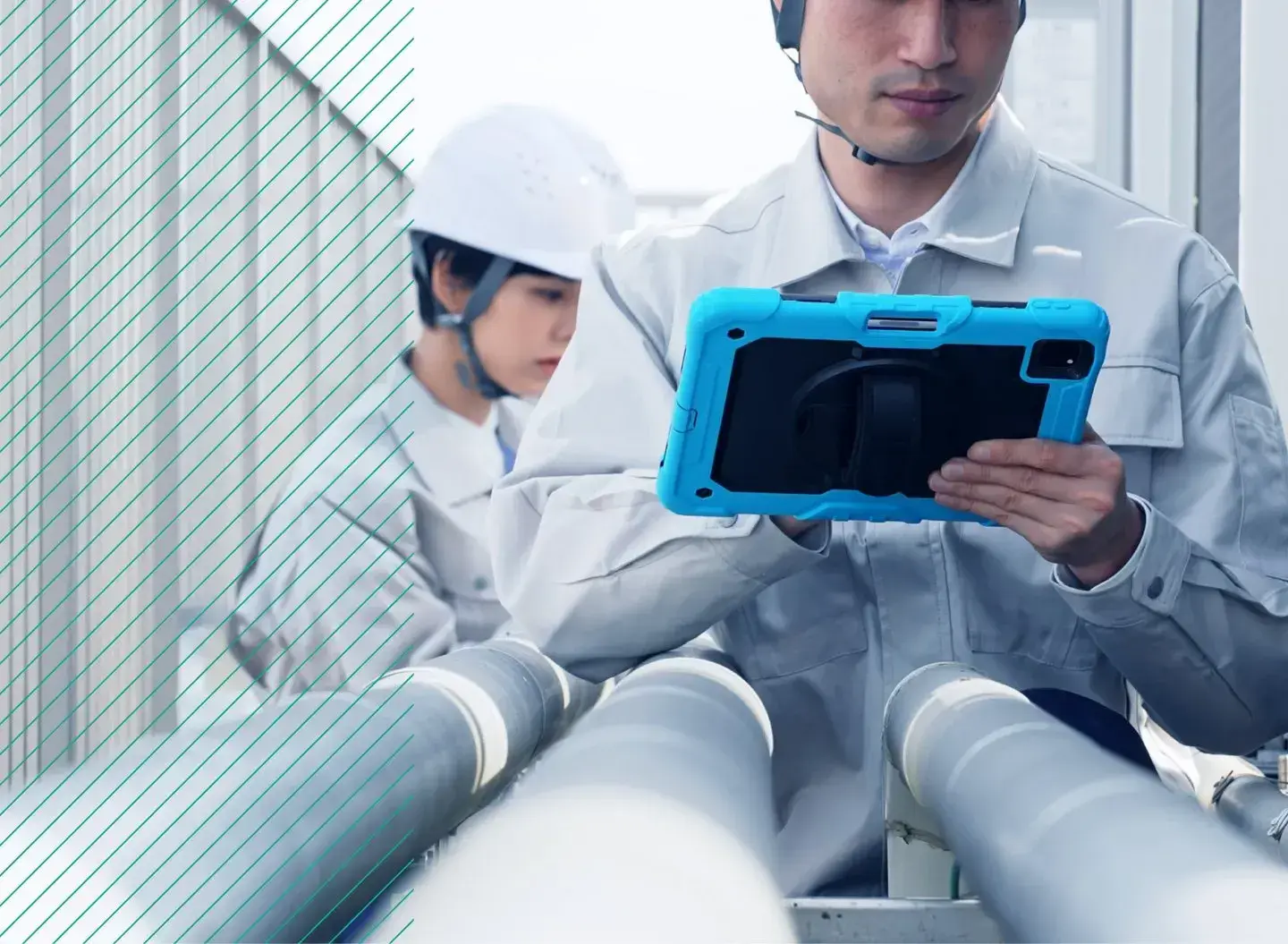The Industrial Internet of Things, or the IIoT, refers to the growing trend of connecting devices and machines to the internet and each other. The Global IIoT Market is expected to reach $110.6 billion by 2025. And there were 46 billion IoT devices in 2021.
But what does Industrial IoT exactly mean?
Industrial IOT explained.
IIOT describes the use of internet-connected sensors and devices to collect data about industrial equipment and processes. This data is used to improve the efficiency and safety of the facility and the frontline workforce.
Some common applications of Industrial IoT include:
- Monitoring the performance of industrial machinery
- Tracking the location of industrial assets and
- Managing the flow of materials through an industrial facility
IoT is the future that promises to revolutionize how we interact with the world around us and is an integral component of smart manufacturing. But, it also has its problems.
According to a survey by Microsoft, 30% of IIoT projects don’t make it past the proof of concept stage.
Here are the five biggest reasons why we think the Industrial Internet of Things often fails.
The 5 reasons IIoT fails.
Lack of Standardization.
One of the biggest problems with IIoT is the lack of standardization. There are a lot of different protocols and technologies, and it’s hard to know which one to use for your specific job.
This can make it difficult to connect different devices and systems and to interoperate between different vendors. It can lead to compatibility issues, data interoperability problems, and difficulties in integrating different devices and systems. It’s important to note that a lack of proper internet connectivity can also hamper production.
To avoid this issue, research the standards relevant to your devices and ensure they’re compatible. You may also need to work with your IoT service provider to ensure your devices are properly connected.
.png?width=750&height=375&name=30%25%20(1000%20%C3%97%20500%20px).png)
Security Issues.
IoT devices are connected to the internet, making them susceptible to hacking and cyberattacks. Industrial IoT systems can be particularly vulnerable to attacks that could disable critical infrastructure or cause safety hazards. Hackers can exploit security flaws to access sensitive data or take control of the device.
So, research the security features of the devices you’re considering. Look for devices that use encryption and authentication to protect data and communications.
Also, use a VPN for devices or other security measures to protect your network further.
Complexity Issues.
When implementing an Industrial IoT system, businesses must consider numerous factors, which can be daunting for even the most experienced IT teams. They often involve many devices and sensors that need to be configured and integrated.
To simplify industrial IoT, manufacturers can use a platform (like SwipeGuide) that offers pre-configured devices and sensors. These can help you save time and effort when setting up your system, offer real-time data processing and analysis. It can help you better use the data generated by your system.
For example, a factory might use a platform to digitalize its processes – by doing so, automating processes, maximizing production, and monitoring worker safety.
Cost Issues.
The costs of deploying and maintaining an industrial IoT system can be prohibitive for many companies. The upfront costs of buying and installing devices and the ongoing costs of maintaining and upgrading them can pile up.
To avoid cost issues, companies must carefully consider their IoT system's total cost of ownership. Also, look for ways to reduce costs through economies of scale and open-source software and hardware.%20(1).png?width=750&height=375&name=30%25%20(1000%20%C3%97%20500%20px)%20(1).png)
Skill Issues.
Many companies don't have the internal resources necessary to design, implement, and operate an IoT system. So they need to rely on outside help, which can be expensive.
To avoid the lack of skilled personnel, invest in employee training and development. Also, look for IoT platforms that offer easy-to-use interfaces and comprehensive documentation.
Properly Setting Up Your IIoT.
Digital tools and a proper internet connection can help you gain transparency and connectivity in your manufacturing operations. This is a critical first step in the process of connecting expert knowledge from digital work instructions, SOPs, Checklists, and approval workflows - ultimately ensuring compliance and quality.
A successful IIoT project can transform and prepare you and your company for the future.
Wanna learn more about Manufacturing IoT?
👉 5 Smart Manufacturing Trends To Boost Productivity in 2023.
👉 Cloud Solutions are Empowering Employees in the Smart Factory.
👉 The Human Side of Manufacturing Technology


